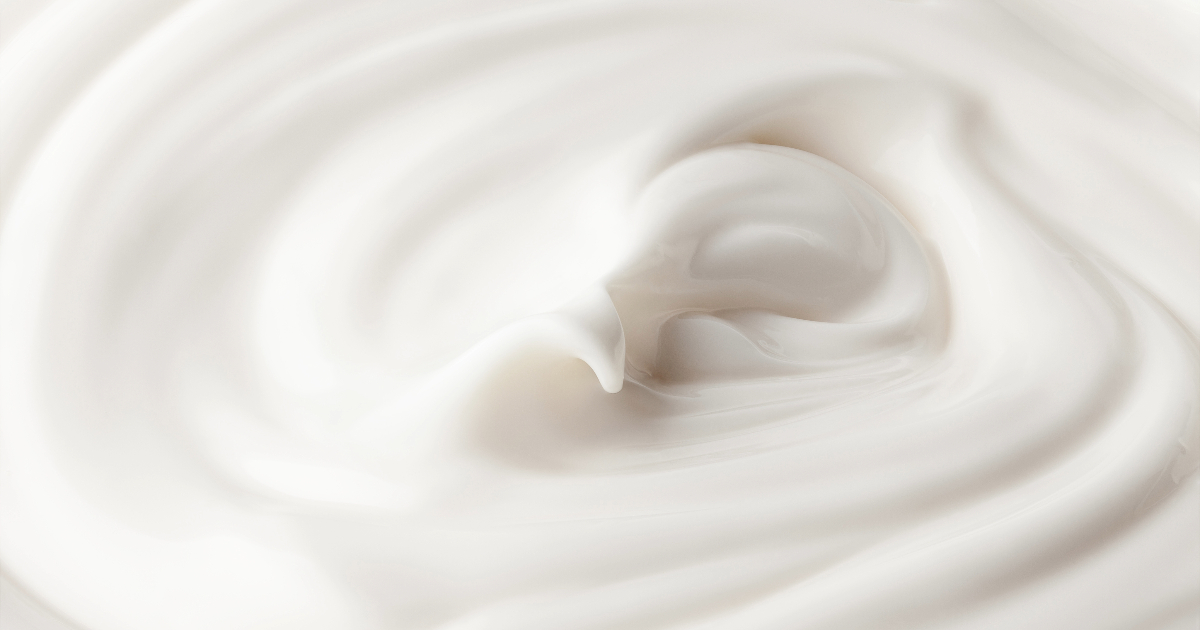Whipped cream is a light and airy topping that can transform desserts into something truly special. When homemade whipped cream comes together properly, its delicate, cloud-like texture provides the perfect finishing touch for everything from ice cream sundaes to chocolate mousse.

However, you may have experienced the frustration of whipping and whipping your heavy cream, only to end up with a thin, runny mess instead of billowy peaks. Rest assured, you're not alone. Even experienced bakers sometimes struggle to get their whipped cream to come out just right.
Your Cream Isn't Chilled
One of the most frequent culprits behind whipped cream not whipping up is cream that isn't cold enough. For the cream to whip properly and hold its shape, it must be thoroughly chilled before you start whipping.
When the cream is too warm, the fat molecules are too soft to effectively stabilize the air bubbles you whip into the cream. No matter how long you beat warm cream, you'll end up with a runny mess rather than billowy peaks.
For optimal results, it's best to chill your heavy whipping cream overnight in the refrigerator. But if you're short on time, you can quick-chill the cream for at least 30 minutes before whipping.
Not only does the cream itself need to be cold, but so do your tools. Place your mixing bowl and beaters in the fridge for 30 minutes up to overnight before whipping. Using chilled tools helps the whipped cream set up faster for better volume and stability.
The colder your cream and tools, the faster and easier it will be to whip the cream to perfection. So remember to allot time for thorough chilling before attempting to whip up a batch of homemade whipped cream.
Key Takeaway: Start with thoroughly chilled cream and tools for best whipped cream results.
You're Using the Wrong Type of Cream
Whipped cream gets its billowy texture from the incorporation of air into heavy cream's high-fat content. Therefore, you need a cream with adequate fat to make stabilized whipped cream.
Heavy whipping cream, with 36-40% milk fat, is the ideal choice for whipping. Whipping creams, which contain 30-36% milk fat, can also work but won't whip up quite as easily or sturdily as heavy cream.
Unfortunately, low-fat dairy products like half-and-half, light cream, milk, and non-dairy kinds of milk lack sufficient fat to whip up. No matter how long you beat them, you won't get billowy whipped cream - just a thin, frothy sauce.
Stick with properly formulated heavy whipping cream or whipping cream with at least 30% milk fat. Avoid anything labeled "light", "low-fat", or "non-dairy" if you want your cream to whip up.
You're Whipping Too Long
While it's essential to whip cream thoroughly, it is possible to overbeat your cream. Whipping for too long can cause the delicate emulsion of fat and air to break down, leading to a deflated, curdled, or grainy mess.
Whip until soft or stiff peaks form - once you've reached your desired texture, stop mixing immediately. Overbeating even briefly past the peak stage will quickly cause your whipped cream to break and lose volume.
If you do overbeat slightly, you can sometimes rescue the cream by gently folding in a bit of chilled, fresh liquid cream. But if the whipped cream is severely overwhipped and curdled with visible whey separation, it cannot be revived.
Your Bowl and Tools Aren't Clean
Any traces of grease or oil left in your mixing bowl, beaters, or whisk will hinder your ability to whip air into the cream. For best results, carefully wash and rinse all equipment before whipping.
Avoid washing tools with soap that leaves an oily residue. For utmost cleaning, wash equipment in very hot water and follow up by rinsing with a vinegar solution to remove all traces of grease.
You're Using Ultra-Pasteurized Cream
Ultra-pasteurized or UHT creams are heat-treated at very high temperatures to prolong shelf life. However, this intense heat damages the proteins and emulsifiers that allow the cream to whip up properly.
Ultra-pasteurized cream tends to whip up much slower and lighter than regular pasteurized heavy cream, even when thoroughly chilled. For best results, avoid UHT creams and use standard pasteurized heavy whipping cream whenever possible.
Your Cream Is Too Old
Heavy cream does expire and whip-ability deteriorates over time. For best results, use your heavy cream as close to the purchase date as possible.
Once opened, store heavy cream in the coldest part of the fridge and use it within 5 days for optimal whipping properties. Discard cream over 1 week from the purchase date, as older cream may not whip up properly.
You're Adding Ingredients at the Wrong Time
When making sweetened whipped cream, wait to add sugar and flavorings until after soft peaks begin to form. Adding sugar too early in the whipping process inhibits foaming.
For stabilized whipped cream, fold in ingredients like cornstarch or gelatin once you've whipped the cream just until very soft peaks begin to form. Take care not to over-whip once ingredients are added.
Your Cream Was Improperly Stored
Cream is highly perishable and will deteriorate rapidly if not stored properly. Leaving heavy cream out at room temperature or neglecting to chill it quickly after purchase gives naturally occurring bacteria a head start on spoilage.
Spoiled or souring cream may have difficulty whipping up. Always refrigerate cream immediately after purchase. Seal it tightly before refrigerating and store it in the coldest part of the fridge, not in the door.
You're Not Whipping Enough Cream
When whipping smaller batches of cream, the headspace left in your bowl can limit your ability to aerate the cream sufficiently. For easier whipping, fill your bowl at least 1/3 to 1/2 full with cream.
Using a deeper bowl rather than a wide, shallow one can also help when whipping small quantities. The deeper container gives more room for the cream to expand into billowy peaks.
Troubleshooting Whipped Cream Problems
Use this handy chart to troubleshoot and fix common whipped cream failures:
| Problem | Solution |
|---|---|
| Runny, thin texture | Chill cream and tools thoroughly before whipping; use proper heavy whipping cream; avoid UHT cream |
| Refuses to thicken at all | Use cold cream with adequate fat content (30-40% milk fat); clean bowl and beaters thoroughly; avoid ultra-pasteurized cream |
| Deflates and wheys after whipping | Avoid overbeating once peaks form; fold in unwhipped cream if slightly overwhipped |
| Curdled, lumpy, or grainy texture | Cream was overwhipped - cannot be revived once curdled |
| Weeps liquid when standing | Fold in stabilizers like cornstarch or gelatin; store whipped cream in airtight container |
How to Make Perfect Whipped Cream
Follow these tips for whipped cream that stays light, lofty and stable:
- Chill cream, bowl, and whisk or beaters for at least 30 minutes before whipping - overnight is even better.
- Use properly formulated heavy whipping or heavy cream containing 30-40% milk fat.
- Whip chilled cream at high speed until soft or stiff peaks form - don't overbeat once it starts to thicken.
- Add sugar and flavors at the soft peak stage, then briefly whip to incorporate.
- For stability, fold in a small amount of cornstarch, gelatin, or lemon curd once the cream is softly whipped.
- Use cream within 5 days of purchase and store chilled until ready to whip.
- Make sure all equipment is meticulously clean and grease-free before whipping.
Taking a few simple precautions will reward you with whipped cream that stays light, lofty, and spreadable - never thin, runny, or watery. With the tricks above, you'll be an expert at crafting gorgeous whipped cream toppers worthy of any dessert.
Key Takeaway: Follow proper technique and use well-chilled, fresh heavy cream for whipped cream that holds its shape beautifully.
FAQs
Why did my whipped cream turn back to liquid?
If whipped cream starts out airy and lofty but later deflates, you likely overwhipped the cream past soft peaks, causing the emulsion to break down. Refrigerating uncovered whipped cream also causes it to lose volume.
Why is my whipped cream grainy?
A grainy texture means the cream was significantly overwhipped, past the point of stiff peaks. The fat clumps together, producing a curdled appearance and the liquid whey separates out - unfortunately, this can't be fixed.
Can I rescue overwhipped cream?
If only slightly overbeaten, you may be able to rescue it by gently folding in additional chilled liquid cream. But curdled, lumpy whipped cream is a lost cause - the emulsion has broken down too much.
Why does my whipped cream collapse after piping or spreading?
Whipped cream that couldn't hold its shape was either underwhipped, overwhipped, or wasn't stabilized properly. Make sure to whip chilled cream to stiff peaks and fold in an ingredient like cornstarch to stabilize it before use.
How can I make whipped cream more stable?
Fold a small amount of cornstarch, gelatin, lemon curd, or mascarpone cheese into softly whipped cream to stabilize it. Store whipped cream in an airtight container and minimize exposure to heat, which causes it to melt and deflate faster.
Conclusion
Perfectly whipped cream requires a delicate balance of proper ingredients, chilling, and technique. Now that you know what causes whipping cream to fail, you can troubleshoot your next batch for fluffy, spreadable results every time.
Chill your heavy cream overnight, whip with clean tools just until it holds peaks, stabilize with cornstarch or gelatin, and avoid overbeating.

